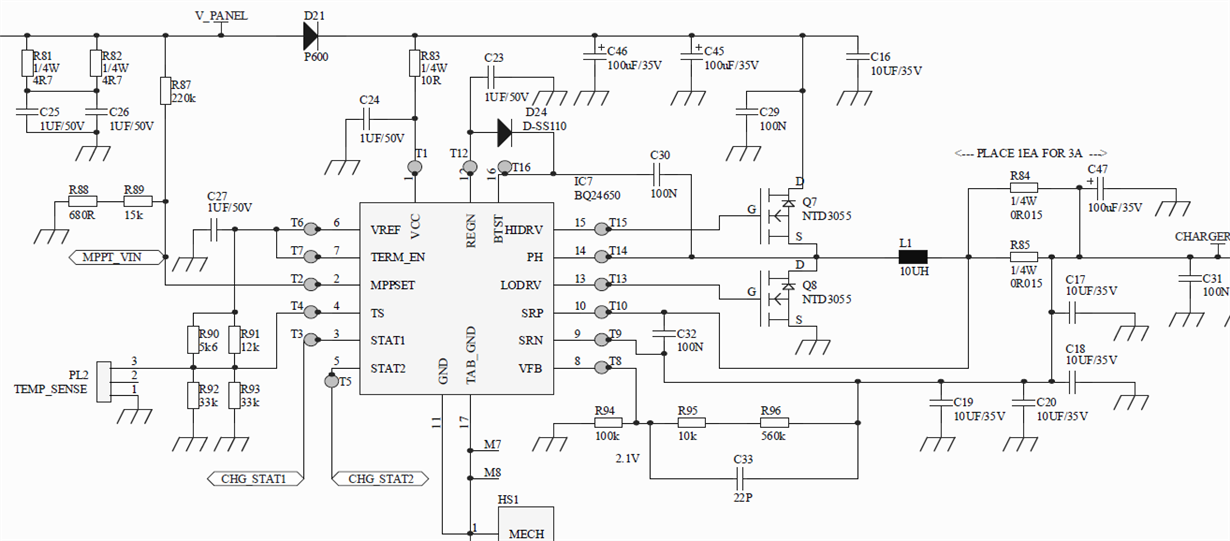Hi TI Community,
OK, I have been testing with a solar charger circuit using the BQ24650 part, into a "12V" lead acid battery. The solar panel has a MPPT voltage of approx 18V, and an OC voltage of approx 23V, the panel is rated as "50W", so approx 2.8A input for maximum sun. I have set the voltage output via feedback resistors to 14V, and the SRP/SRN current sense resistor to 0R015, in the 3A region.
My circuit and PCB follow Fig 1 of the BQ24650 datasheet fairly closely, except for MPPSET, VFB, and TS resistors changing for my design. Power FETs are 2X NTD3055 parts- perhaps not the best for efficiency, but good enough to get testing.
Since I am testing at night, I am simulating the solar panel with a bench supply, set to 22V and 3A current limit. When operating properly, the circuit pulls the bench supply (in current limit) down to 18.2V. So, MPPT functionality looks good.
The problem I have is this: for a few hours of testing, the circuit behaves as expected (OK, the power FETs get rather warm!). However, it then stops charging and never starts again - even after the supply and battery being disconnected, to reset any internal timers.
The output (battery) voltage is below regulation, so it should charge. The TS input is "mid band" for operation (I have even used a potentiometer to set the voltage accurately to mid band, so as to rule this out).
I have gone through the list of "ENABLE AND DISABLE CHARGING" in the datasheet, top of page 14. In normal working conditions, all of these are true. When not working, only one of these things fails: REGN is 0V. NB VREF is still 3V3.
When I replace the BQ24650 part, everything works again and REGN is >6V. I assumed my hand soldering of the part was the problem. But after an hour or so of testing with a part put down by my SMD contractor, the part stops working again. V_REGN is 0V. Unpowered, I measured from REGN to GND, approx 12ohms. By measureing around the part, I am fairlt certain that this low resistance is due to the BQ24650 part, not the circuit around it.
* Has the BQ24650 failed? No amount of trying on my part can get the circuit to start again, or for V_REGN to return to 6V odd.
* Am I over-stressing the part in some way? I notice in SLUU444A and SLVA437A that a 2R2 resistor is in series with the REGN pin: is this needed as some current limit?
* REGN feeds to BTST via a diode, and as I understand, as positive supply for the top FET driver. But by the datasheet, BTST is good for 34V, somewhat above my panel spec - why can I not diode OR BTST with the panel voltage and switcher feedback via 100N?
Any help/insight would be appreciated.


